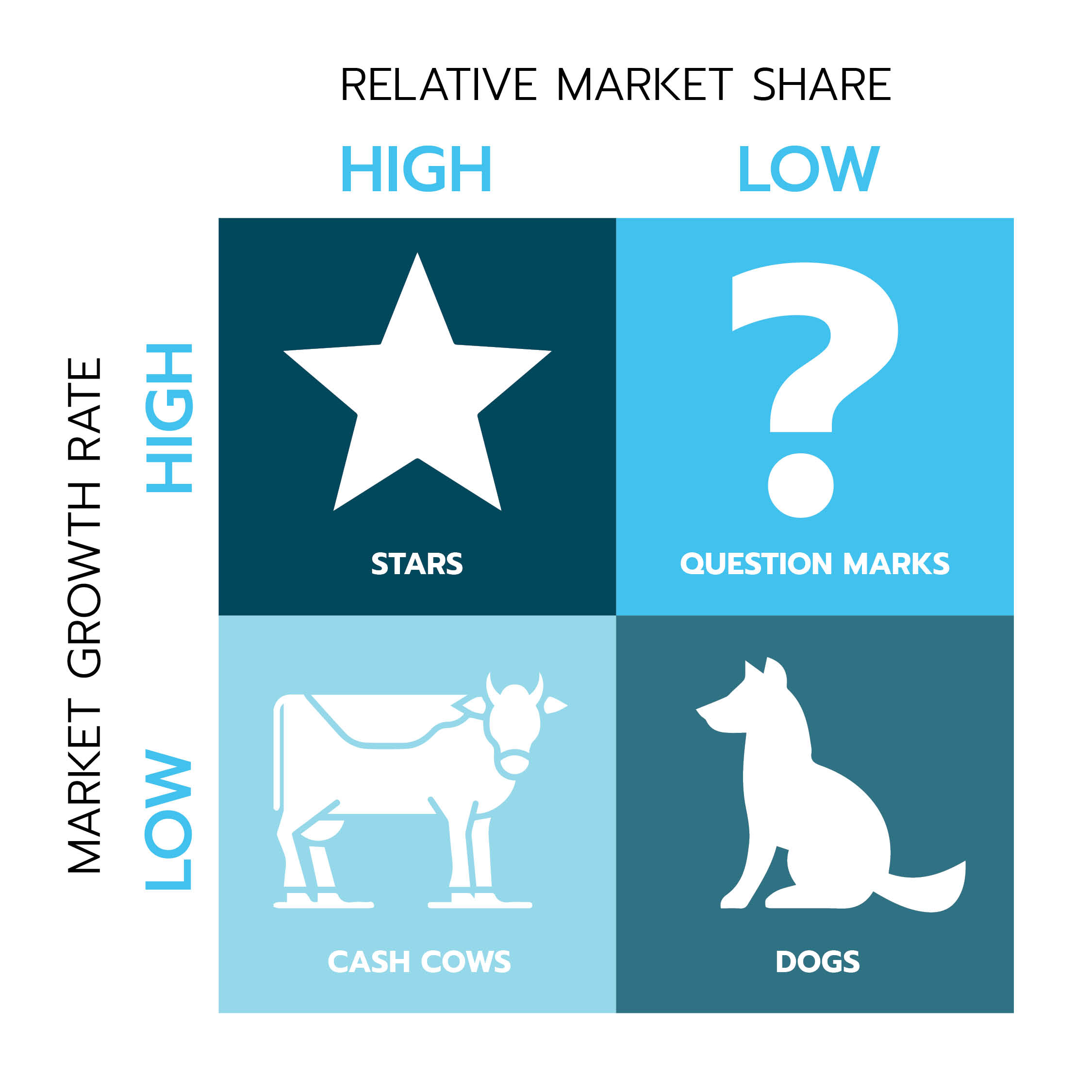
Using the BCG Matrix to Allocate Your Marketing Budget
You’ve got that one product or service that company leadership is really buzzing about. Then you’ve got the products that always sell well, the ones you rely on to pay the bills. And maybe you’ve got a product or two that have you wondering if it’s worth promoting at all…
Before my recent maternity leave, I was cleaning out the closet of my office, which we converted into a nursery. I came across an old notebook from one of my first marketing classes. Curious, I opened it up, and the page I happened to flip to contained a sketch of the BCG Matrix, also called the growth-share matrix or the product portfolio matrix.

This diagram dates back to the 1970’s when it was concepted and then refined by the Boston Consulting Group. This matrix can help companies, and marketers, analyze product portfolios and decide where to allocate resources. There are 4 basic parts of the matrix. Let’s break down each of these, and think about how a pizza restaurant might categorize its products using this matrix:
- Stars
Stars are products or services that have a high market share and a high growth rate. A lot of times, stars have a monopoly on the market. But, they can also require a lot of resources to promote and it is important to ensure that the cashflow you’re receiving from stars exceeds the required investment for growth. With any luck, your stars will become cash cows.
For our pretend pizza restaurant, a star might be a specialty pizza that is unique. Let’s say it’s a BBQ chicken pizza. It’s quickly become popular, and you might spend a bit extra to promote it with the hopes that your sales will continue to increase on this product!
- Cash Cows
Cash cows are the “bread and butter,” or foundation, of your company. These are the products or services that sell consistently, with a high market share, but a lower growth rate. They provide a steady income.
For a pizza restaurant, cash cows would be the large, 2-topping pizzas that likely make up the majority of sales. You can count on selling a certain number of these pies per day.
- Question Marks
Question marks are products or services that have a low market share in a high growth market. They are sometimes referred to as “problem children” because you’re just not sure if they will become stars, or if after years of using resources, they will become dogs. It’s important to analyze these products carefully and adjust budget accordingly.
Question marks at our pretend pizza palace might be menu items like cheese bread, salads, or dessert add-ons. Not every customer is going to order these items, but it is always possible that one of these items might rise in popularity and become a star. But, if there is a sudden increase in the price of feta cheese that goes on the Greek salad and it become too expensive, it could become a dog, and you should consider dropping it from your menu.
- Dogs
Dogs are products or services that have a low market share and a low market growth rate. It is typically recommended to discontinue the investments in. If you notice any dogs when analyzing your product portfolio, consider whether or not you are dedicating too many resources to these units.
You know that cheesecake that the assistant chef at the pizza place loves to make, but it takes so much time, freezer space, and expensive ingredients? And sometimes you don’t even sell all the slices before they go bad? That product is a dog. It’s time to re-evaluate spending any resources on the cheesecake.
It’s important to analyze your product portfolio to make sure you are allocating your resources appropriately. Whether you’re slinging pizza pies or offering another type of product or service, a trusted partner can help analyze your product mix and make a recommendation of how to allocate marketing dollars accordingly. LEAD Marketing is experienced in working with clients from a variety of industries. Contact us today to get started!






